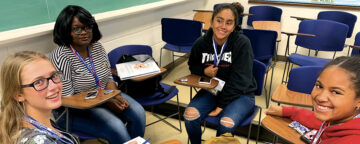Public knowledge of the issues in the 2008 presidential election is increasing as the campaign proceeds, according to data released today by the National Annenberg Election Survey (NAES).
Although more than half of the American public still cannot answer basic questions about the presidential candidates’ records and their stands on issues, knowledge levels have increased over time, the NAES found.
“Lost in the talk about the horse race and campaign tactics is the fact that there are important distinctions between candidates and across parties,” said Kathleen Hall Jamieson, director of the Annenberg Public Policy Center of the University of Pennsylvania and co-director of the National Annenberg Election Survey (NAES).
“The NAES suggests that the country has learned important information about these issue distinctions but still has a way to go,” said Jamieson.
The candidates have had ample opportunities to air their positions. More than 30 debates and other forums have already taken place. Two more Democratic debates are on tap in coming days. Tomorrow, the candidates will meet in Austin, Texas, at an event co-sponsored by CNN, Univision Communications, Inc. and the Texas Democratic Party. On Feb. 26, they will meet again at a debate co-sponsored by NBC and Cleveland State University in Cleveland.
Counting both Democratic and Republican, more than 70 primaries and caucuses have been held. Over 30 million votes have been cast, and more than $100 million has been spent on political advertising.
On specific issues, voter awareness is climbing. For example, the charts below show a steady increase in the knowledge that Sen. Barack Obama, Democrat of Illinois, was against the Iraq War from the beginning. In the first week the question was in the survey (January 14), 32 percent correctly named Sen. Obama. The number correctly naming Sen. Obama increased to about 50 percent in the five days leading up to Super Tuesday (see Chart 1).


